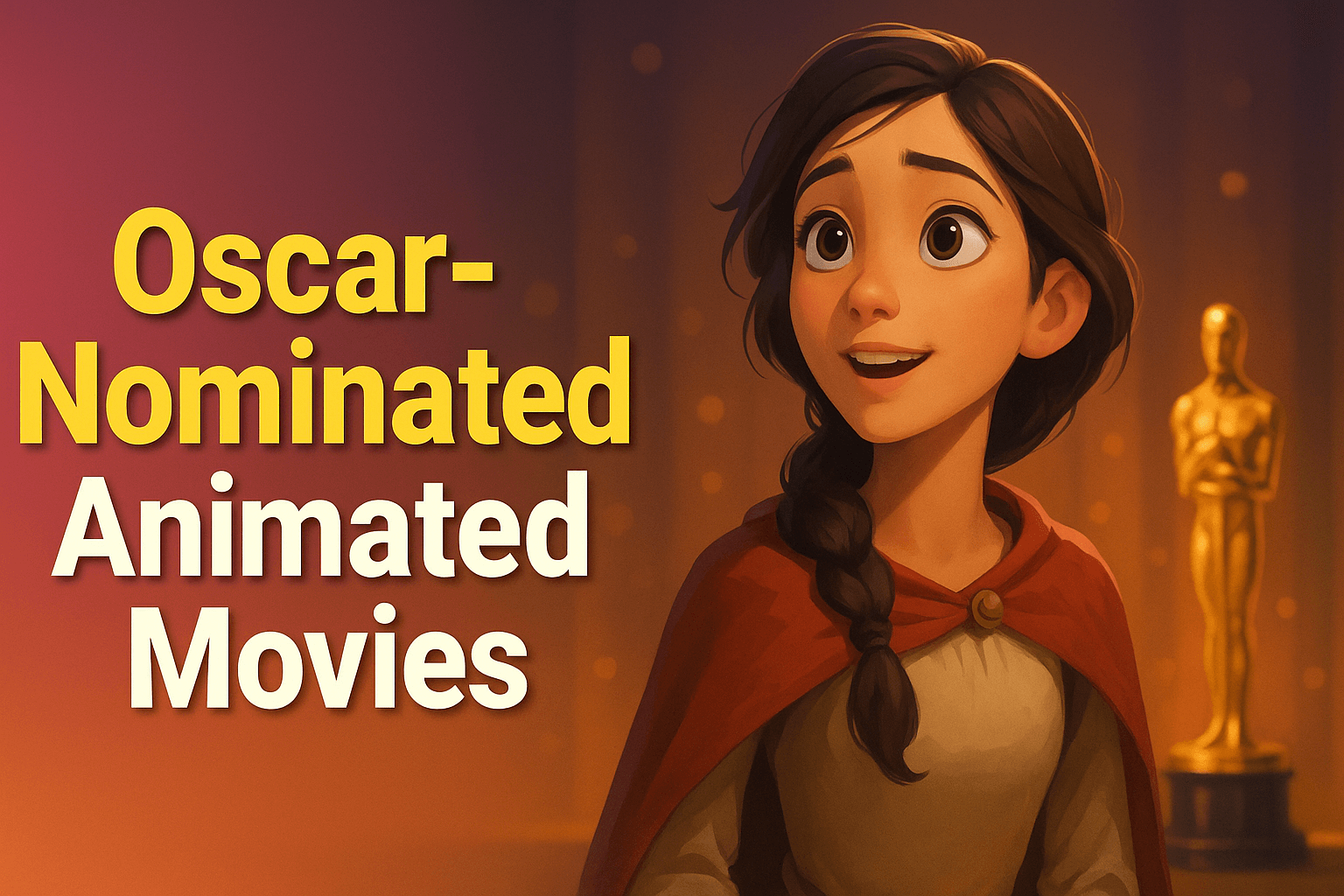Oscar-Nominated Animated Movies: A Strategic Guide

Introduction
In the world of media and entertainment, an Academy Award nomination is more than just a trophy; it is a validation of a film’s creative and commercial excellence. For a content acquisition executive, business development lead, or production financier, understanding the history of Oscar-nominated animated movies provides a powerful strategic lens for identifying potential partners and assessing the competitive landscape.
This is not simply a list of past achievements; it is a blueprint of the talent and production houses that consistently demonstrate an ability to deliver high-quality, impactful content. However, gaining a holistic view of a studio’s track record, its key personnel, and its full project slate is often a manual, fragmented process.
This article provides a strategic guide to the Academy Award for Best Animated Feature, outlining its history and highlighting how a data-driven platform can empower you to move from an incomplete perspective to a full-picture analysis of a studio’s capabilities.
Key Takeaways
| Core Challenge | Fragmented data and a lack of real-time intelligence make it difficult to identify and connect with the production companies behind Oscar-nominated animated films. |
| Strategic Solution | Utilize a comprehensive data platform to map a studio’s track record, its key decision-makers, and its role in the global supply chain to identify new co-production or content acquisition opportunities. |
| Vitrina’s Role | Vitrina provides a centralized, global view of the entertainment supply chain, linking projects to companies and executives to enable smarter, data-driven decisions at scale. |
The History of the Best Animated Feature Film Oscar
The Academy Award for Best Animated Feature Film is a relatively new category, established in 2002 at the 74th Academy Awards. Prior to its creation, animated films were occasionally given special, honorary Oscars for their innovation, such as the one presented to Walt Disney for Snow White and the Seven Dwarfs in 1938.
For much of its history, the Academy resisted the idea of a regular award for animated features due to the limited number of eligible films produced each year. However, as the volume and quality of animated productions increased, the category was created to recognize the “best animated film with a running time of more than 40 minutes”. The first film to win in this category was Shrek.
The criteria for a film to qualify for a nomination are specific: it must have a running time of more than 40 minutes, a significant number of its major characters must be animated, and animation must account for at least 75% of the film’s running time.
The award itself is presented to the key creative individuals most responsible for the overall achievement, which can include up to four individuals, one of whom must be a director. Since its inception, Pixar has been the most successful studio, holding the record for the most nominations with 19 and the most wins with 11.
In my analysis, a nomination in this category is a powerful strategic asset, signaling a studio’s creative vitality and technical mastery. It validates their position in the market and can be a significant factor in securing future deals and collaborations.
The Most Impactful Oscar-Nominated Animated Movies
From a strategic perspective, these animated films represent significant milestones in the history of the Oscars and the animation industry as a whole. Each one provides a valuable case study in creative excellence and commercial impact.
- Shrek (2001): The first-ever winner of the Academy Award for Best Animated Feature Film. Its win over Pixar’s Monsters, Inc. and the nomination for Best Adapted Screenplay validated DreamWorks Animation’s position as a major creative and commercial force.
- Spirited Away (2002): This film was the first Japanese, hand-drawn, and non-English language film to win the award. Its win for Studio Ghibli showcased the global creative power of animation beyond the American mainstream.
- Beauty and the Beast (1991): This Disney classic was the first animated feature to be nominated for Best Picture, a significant milestone that occurred before the Best Animated Feature category was created. Its nomination in the five-film Best Picture format proved that animation could compete with live-action dramas at the highest level.
- Up (2009) and Toy Story 3 (2010): These Pixar films were nominated for both Best Animated Feature and Best Picture, a feat that demonstrated the creative and commercial strength of the studio. Their nominations occurred after the Best Picture category was expanded to ten films, but they still hold a prestigious place in Oscar history.
- Guillermo del Toro’s Pinocchio (2022): This film’s win for Netflix demonstrated the streamer’s increasing presence and influence in the animation awards race. It also highlighted the continued artistic relevance of stop-motion animation in a CGI-dominated landscape.
- Flee (2021): This Danish film made Oscar history by being the first film ever to be nominated for Best Animated Feature, Best International Feature Film, and Best Documentary Feature. Its nominations highlighted the innovative potential of animation as a medium for documentary and narrative storytelling.
- Spider-Man: Across the Spider-Verse (2023): A nomination for this film showcased a move away from the hyperrealistic style often favored by the Academy toward a more stylized, artistically innovative approach. The film’s success validated the creative risks taken by Sony Pictures Animation.
How to Find Oscar-Worthy Animation Partners
For a studio or executive seeking to produce a project with Oscar potential, the challenge is not just knowing which films were nominated but identifying the companies and individuals behind them. The global animation market is vast and fragmented, with thousands of production houses and service vendors. Relying on fragmented information or manual research can lead to missed opportunities, as the data on key projects, co-production partners, and executive contacts is often incomplete.
The traditional approach of cold outreach or relying on a limited network is no longer sufficient. To operate at a strategic level, you need a data-driven platform that can provide a holistic, real-time view of the entertainment supply chain.
This means having access to intelligence that links projects to the specific companies and executives who worked on them. For example, if you are looking to find a co-production partner for a stop-motion animated film, you need a system that can quickly identify and profile studios like Aardman, the company behind multiple Oscar-nominated films. A platform like Vitrina provides this capability by enabling you to source and vet partners based on their verified track record, creative style, and key personnel.
This is the difference between simply knowing that Spirited Away won an Oscar and being able to find the specific executives at Studio Ghibli who were involved in its production and distribution. This intelligence is crucial for sourcing co-production partners, finding emerging talent, and tracking the competitive landscape.
For a deeper understanding of how this kind of intelligence is applied, you may find our blog post on How to Scout Co-Production Partners by Genre insightful. Similarly, our article on The Future of Animation in Film provides a framework for tracking emerging trends at scale.
Conclusion
The history of Oscar-nominated animated movies is a story of creative and technical evolution. For an executive, appreciating this history is a strategic exercise in understanding the capabilities of the global creative ecosystem. However, that knowledge is only valuable if it can be translated into actionable intelligence. The days of relying on fragmented data are over; the market demands a holistic, data-first approach.
To thrive in this environment, you need a single, continuously updated source of truth. A platform like Vitrina provides this by linking projects, companies, and decision-makers in a structured database.
This allows for the kind of surgical, data-driven analysis that transforms a complex industry into a clear landscape of opportunities. It is the mission-critical tool for moving from a reactive, manual approach to a proactive, strategic one. Start your strategic discovery today.
Frequently Asked Questions
Pixar is the most-nominated studio, with 19 nominations and 11 wins. Other major studios with a significant number of nominations include DreamWorks Animation, with 15 nominations, and Walt Disney Animation Studios, with 13 nominations.
Yes, several animated films have been nominated for Best Picture. Beauty and the Beast was the first in 1991. Since the Academy expanded the Best Picture category to include more than five films, Up and Toy Story 3 have also received nominations.
According to the Academy, an animated feature film must be more than 40 minutes long, have a “significant number” of its major characters animated, and animation must account for at least 75% of the total runtime.
Directors with four nominations include Pete Docter, Hayao Miyazaki, and Chris Sanders. Pete Docter has the most wins with three for Up, Inside Out, and Soul.















































